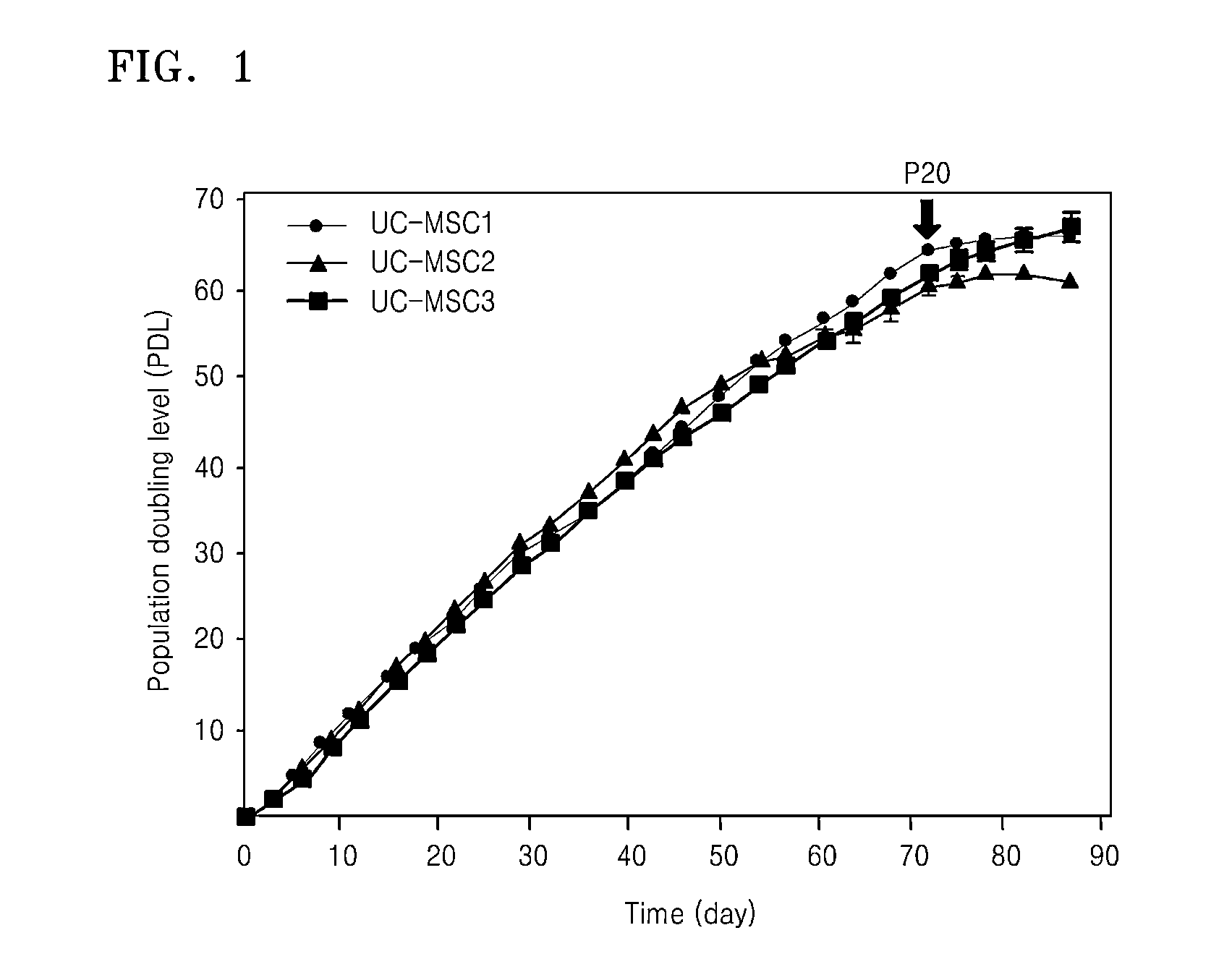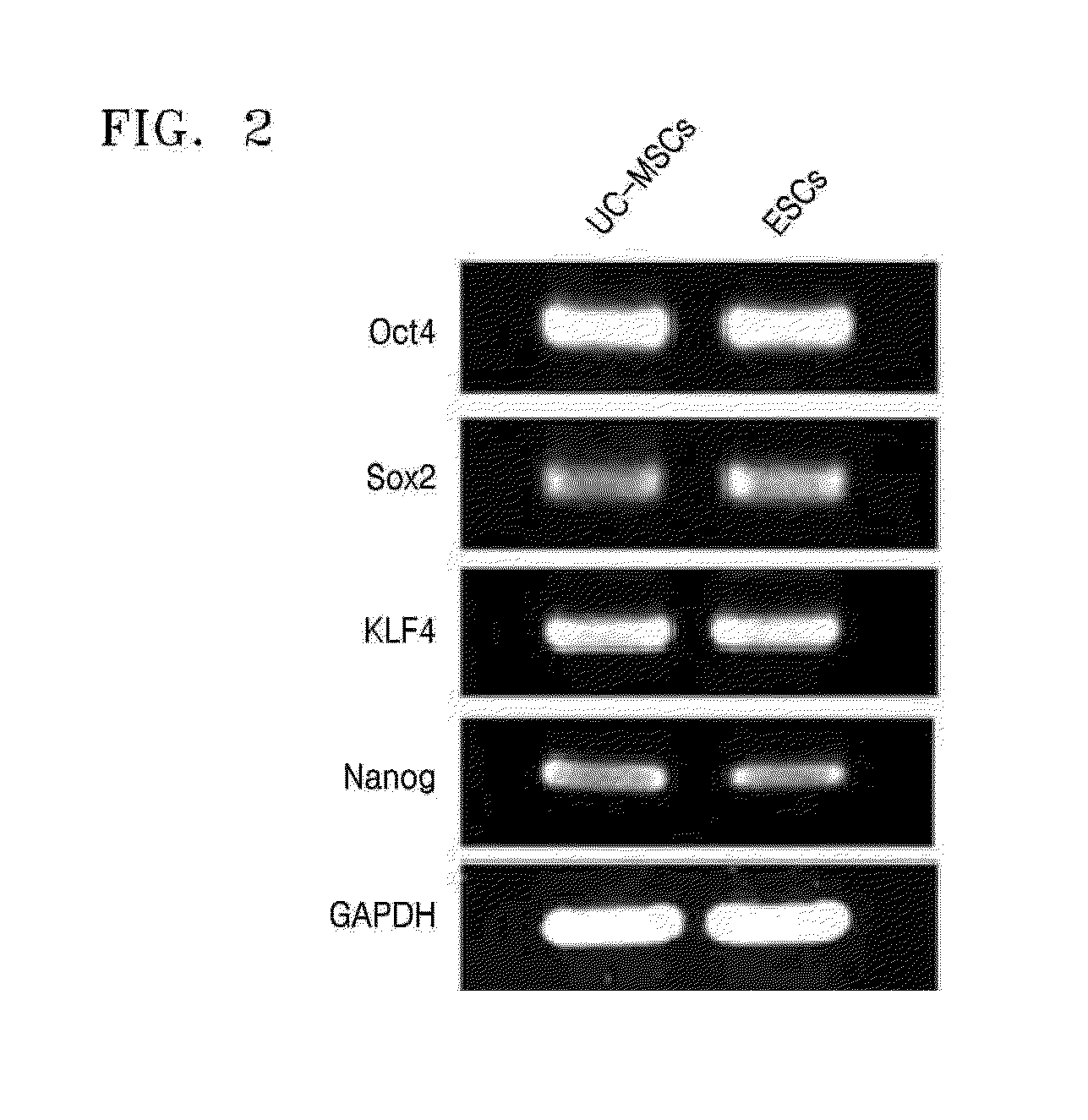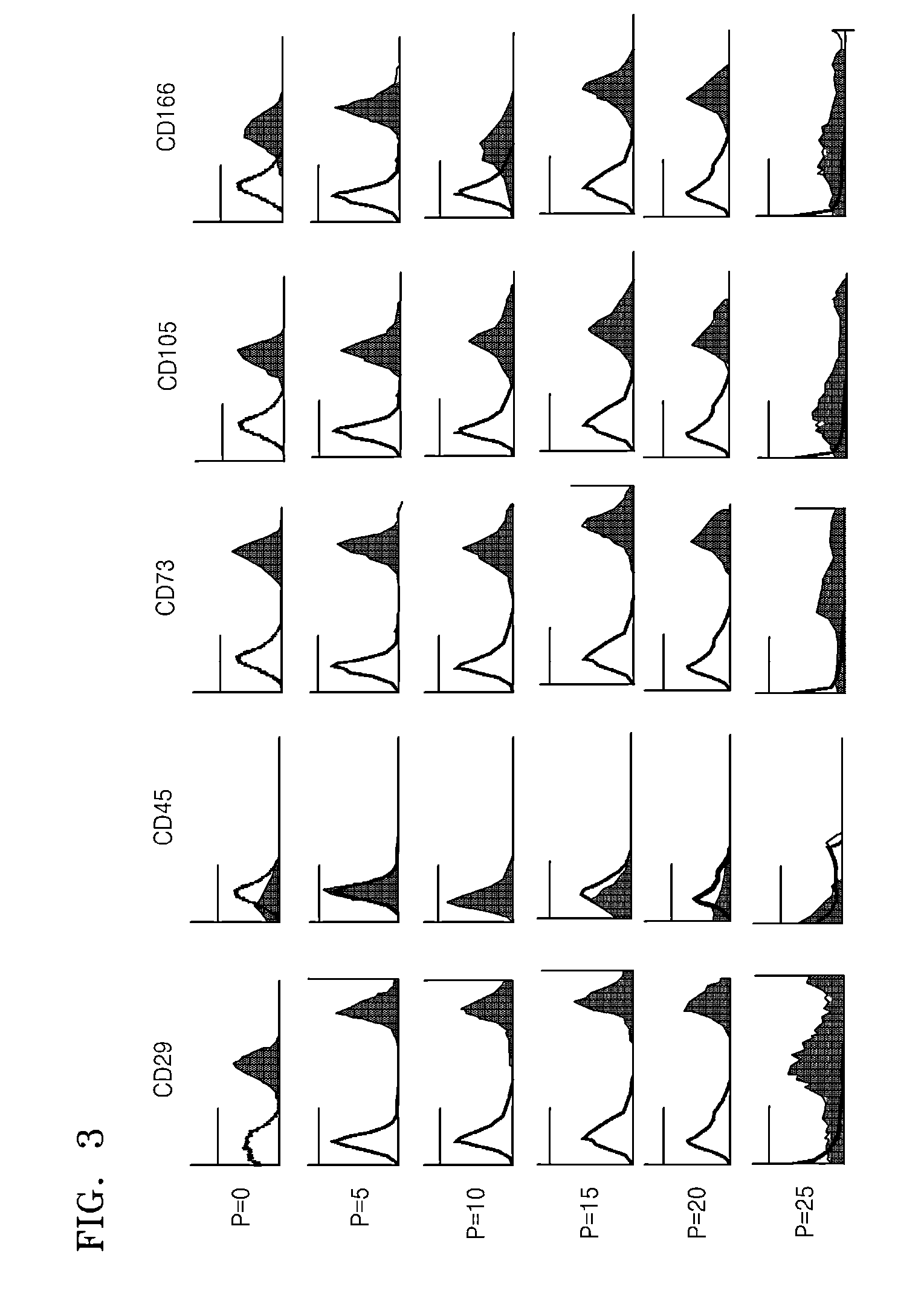Cartilage cell treatment comprising collagen, hyaluronic acid derivative, and stem cell derived from mammal umbilical cord
a cartilage cell and hyaluronic acid technology, applied in the field of biomaterials including collagen and hyaluronic acid derivatives, and cartilage cell treatment including biomaterials and umbilical cordderived stem cells, can solve the problems of cartilage tissue damage, limited effect of hyaluronic acid maintenance, collagen has problems with regard to immune responses,
- Summary
- Abstract
- Description
- Claims
- Application Information
AI Technical Summary
Benefits of technology
Problems solved by technology
Method used
Image
Examples
example 1
Analysis of Separation and Proliferation Potency of Umbilical Cord Stem Cells
[0072]The umbilical cords used in the present research were umbilical cords discarded after delivery by normal mothers upon their agreement. The umbilical cords were used within 24 hours after collecting the umbilical cords.
[0073]Tissues removed of blood external to the umbilical cord by using DPBS without Ca2+ and Mg2+ were removed of an external amnion and two arteries, cut into a size of 1 mm3, and then put into α-minimum essential medium (α-MEM) including 100 U / mL of penicillin, 0.1 μg / mL of streptomycin, and 0.2 μg / mL of an umbilical cord extract. After culturing the same for 7 days, when cells appeared to adhere to the bottom, the cells were treated with 500 U / ml of α-MEM including type I collagenase for four hours to separate the cells. Thereafter, 2×103 of the cells were inoculated per 1 cm2 of a culture dish including α-MEM in which 100 U / ml of penicillin, 0.1 μg / ml of streptomycin, and 0.2 mg / ml o...
example 2
Analysis of Embryonic Stem Cell Markers Through RT-PCR
[0074]Cell pellets were washed with DPBS without Ca2+ and Mg2+, 1 ml of lysis buffer (a product of iNtRON Biotechnology) was added thereto, and then a total RNA was separated therefrom according to the method described in the manual available from iNtRON Biotechnology. 1 μg of RNA was reverse transcribed by using a cDNA synthesis kit (a product of iNtRON Biotechnology) in a 20 μL of a reaction solution including a reaction buffer, 1 mM of dNTP mixture, 0.5 μg / μL of oligo(dT)15, 20 U of RNase inhibitor, and 20 U of AMV reverse transcriptase. The reaction was performed at a temperature of 42° C. for 60 minutes. The RT products (cDNAs) obtained therefrom were subjected to PCR by using a 2×PCR Master mix solution kit (a product of iNtRON Biotechnology) including 10 μL of a reaction solution including 1× Taq buffer, 0.25 U of Taq polymerase, and 10 pM of sense and antisense gene-specific primers. The amplification was performed for a ...
example 3
Expression Analysis of Mesenchymal Stem Cell Markers Through FACS Analysis
[0075]A flow cytometry was used to analyze properties of separated cells. The separated cells were washed by using PBS, treated with trypsin-EDTA to make a monoclonal cell group, and then washed with PBS including 2% FBS and 1 mM EDTA. Thereafter, stem cells markers bound to fluorescein isothiocyanate (FITC) or phycoerythrin (PE) were treated, left to react for 20 minutes and then analyzed by using FACSCalibur (a product of Becton-Dickinson).
PUM
| Property | Measurement | Unit |
|---|---|---|
| Fraction | aaaaa | aaaaa |
| Fraction | aaaaa | aaaaa |
| Composition | aaaaa | aaaaa |
Abstract
Description
Claims
Application Information
 Login to View More
Login to View More - R&D
- Intellectual Property
- Life Sciences
- Materials
- Tech Scout
- Unparalleled Data Quality
- Higher Quality Content
- 60% Fewer Hallucinations
Browse by: Latest US Patents, China's latest patents, Technical Efficacy Thesaurus, Application Domain, Technology Topic, Popular Technical Reports.
© 2025 PatSnap. All rights reserved.Legal|Privacy policy|Modern Slavery Act Transparency Statement|Sitemap|About US| Contact US: help@patsnap.com



